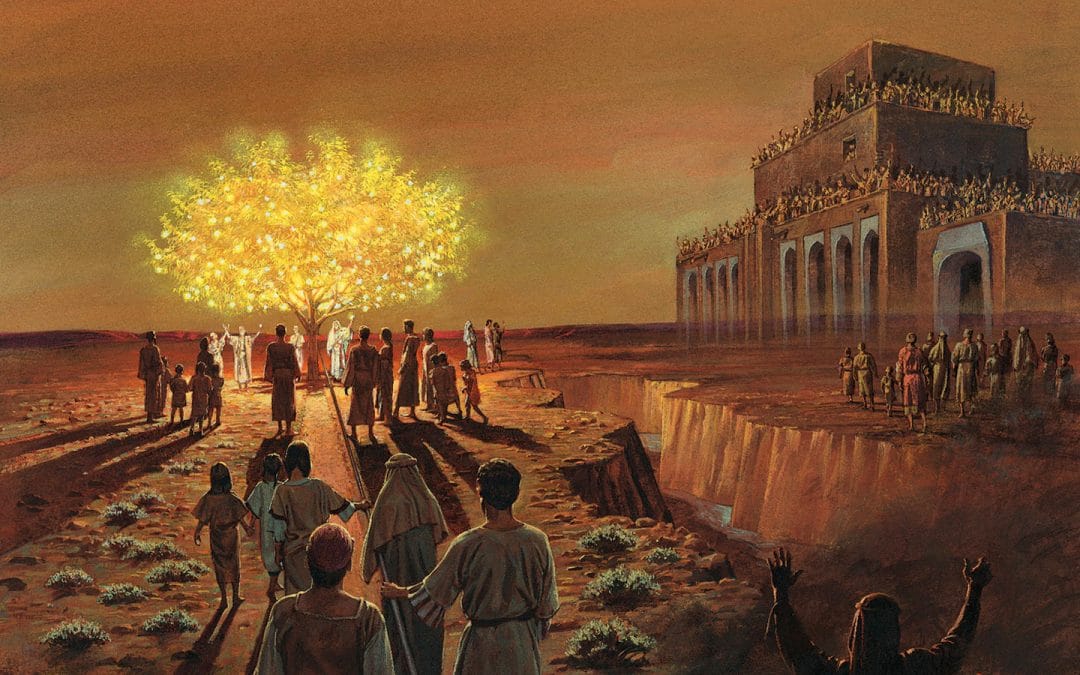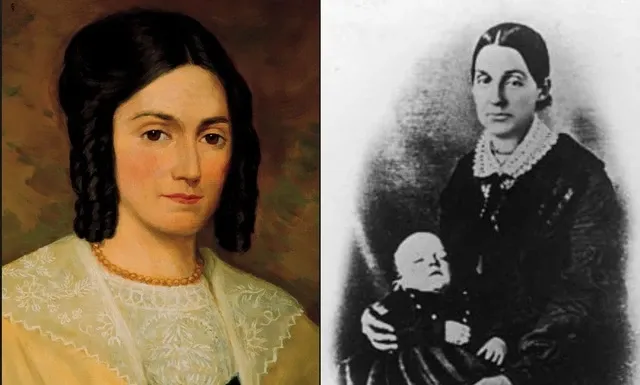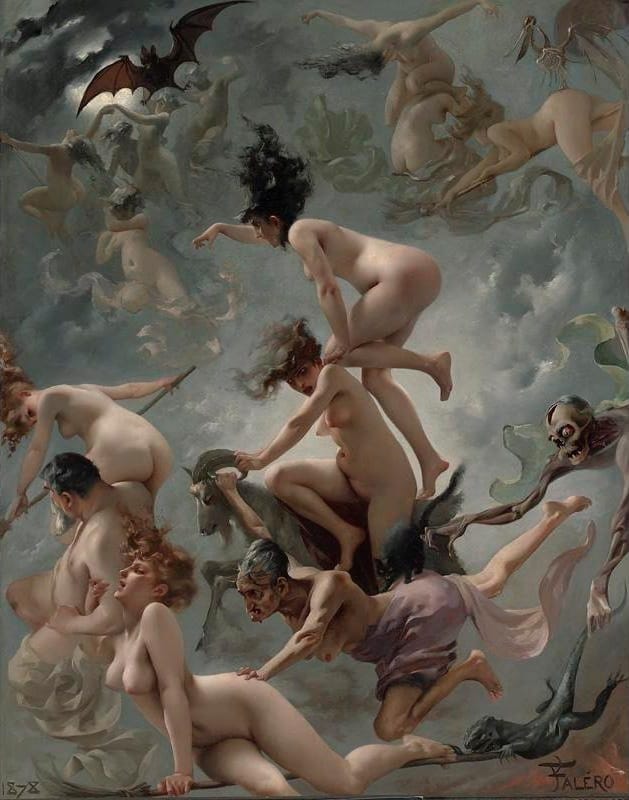Lehi's Dream

Lehi's Dream of the Tree of Life is one of the most beloved and interesting passages in The Book of Mormon, where it can be found in The First Book of Nephi, Chapter 8.
The Tree of Life of course appears in Genesis 2-3 in the middle of the Garden of Eden, as something Adam and Eve are forbidden to eat from and, when they do, they are driven off by an angel with a flaming sword. But in the revelation of the prophet Joseph Smith the Tree of Life is now a desirable destination where we can eat bright white fruit. It adds a few things like a "rod of iron" by a river and a "great and spacious building" full of mocking people (the other "abominable" churches). Saint Augustine would have been horrified.
Lehi's Dream is one of innocence and faith. By contrast, The First Book of Nephi, Chapter 11 is more controversial. It is difficult to avoid the linkage between the Virgin Mary vision below and Joseph Smith's later claim that an angel commanded him on pain of death to become a polygamist. An angel appears and being "carried away in the spirit" leads directly to pregnancy...
Behold, the virgin whom thou seest is the mother of the Son of God, after the manner of the flesh./And it came to pass that I beheld that she was carried away in the Spirit; and after she had been carried away in the Spirit for the space of a time the angel spake unto me, saying: Look!/And I looked and beheld the virgin again, bearing a child in her arms.

From there, no matter that his wife Emma (above) was infuriated by it, Smith moved on to justify polygamy in the controversial Doctrine and Covenants 132, 61-63:
As pertaining to the law of the priesthood—if any man espouse a virgin, and desire to espouse another, and the first give her consent, and if he espouse the second, and they are virgins, and have vowed to no other man, then is he justified; he cannot commit adultery for they are given unto him; for he cannot commit adultery with that that belongeth unto him and to no one else.
And if he have ten virgins given unto him by this law, he cannot commit adultery, for they belong to him, and they are given unto him; therefore is he justified.
But if one or either of the ten virgins, after she is espoused, shall be with another man, she has committed adultery, and shall be destroyed.
Below, the dangers in thinking ten virgins can belong to you... It gets out of control.

Falero was born in Granada, Spain, but he painted mostly in Paris and London, specializing in erotic, Orientalist and supernatural themes before his death in 1896. For another painting: here.
